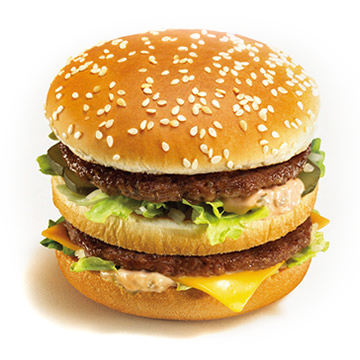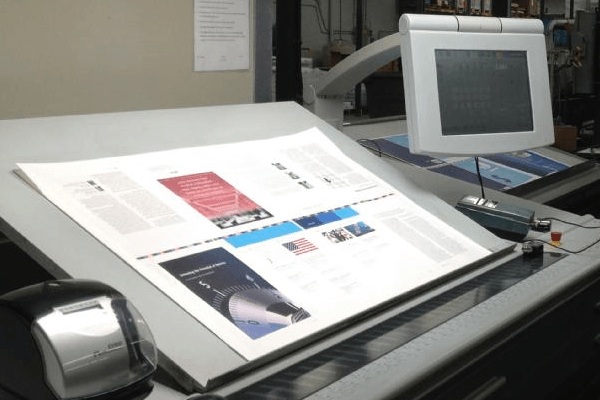The instructor of a training session I recently attended used an analogy that I liked. He asked whether we thought of McDonald’s as a high-quality restaurant. The question drew a few chuckles and, of course, most of us replied that we did not. He then went on to explain that, in fact, McDonald’s is a high-quality restaurant, and here’s why:
Quality is consistency.
McDonald’s is not high-quality because it is considered a premium product, but because it consistently satisfies customer expectations. If a customer wants a quick, tasty meal in 3 minutes for about 5 bucks, then they know that’s exactly what they’ll get at McDonald’s.
For the purposes of playing out the analogy, I submit these definitions:
- Value is provided by meeting or exceeding a customer’s expectations for a price they are willing to pay.
- Quality is providing value consistently over time.
Why is consistency the key?
If the next time you went to McDonald’s and paid $4 for a Quarter Pounder meal, and received a thick, juicy, medium-well burger more like one you’d expect at a nice, sit-down restaurant you’d probably be surprised and very pleased. You’d be singing their praises and talking up the surprisingly wonderful burger you got.
However, if on the following visit you paid your $4 and get the standard issue McDonald’s Quarter Pounder, and not the thick, juicy, premium burger, you’d be disappointed. McDonald’s would have failed to meet your new expectations as a customer, and your perception of the value of McDonalds’ quality might decrease.
I don’t know if there’s a step down from McDonald’s, but if it were me, I’d be equally miffed if I showed up and, say, the burger was charred and the fries still half-frozen – or somehow the food wasn’t nearly as good as I’ve come to expect.
But when you goes to McDonald’s, you typically leave full and satisfied that you got exactly what you expected for a price you willing to pay. That’s why I go there on occasion, and that’s why my kids get all worked up about going to Mickey D’s, too.
Applying what we’ve learned
You may already see how this could tie into becoming a quality Business Analyst., blogger, or whatever it is that you may be doing.
According to our instructor, in order to become “high-quality” in the eyes of our customers, we need to consistently meet or exceed their expectations. It’s not enough to “wow ” them with extraordinary performance on one project only to reset their expectations to varying, lower levels with subsequent ones. The goal is to consistently perform at the best of our ability, and not establish expectations in our customers that we are not capable of meeting, or are less than our best.
I do see some merit to the analogy. I definitely want to provide great value to my customers consistently, and agree that being steady and reliable are important characteristics of a successful Business Analyst.
Of course there are holes that could be poked in this analogy (as is the case for most). One thing I wondered as we discussed McDonald’s and quality was whether some might see this as justification to find a comfort zone at which he/she could perform consistently, become complacent, and call that high-quality. I am sure that wasn’t the intent. What the instructor didn’t delve into, but which are real facts, is that with their competitive landscape, McDonald’s constantly needs to hone its skills and look for incremental competitive advantages in order to continue to win in the marketplace.
As Business Analysts, we are no different. In order to stay relevant (not to mention employed), we have to satisfy our customers consistently while at the same time working to sharpen our skills and increase the value we provide at sustainable levels.
Well, there you have the McDonald’s/Quality analogy. What are your thoughts on it?
How important do you perceive consistency to be for Business Analysts? How about as a measure of quality? Anyone think I am way off on this one? I’ll look forward to your comments.
Download a print-friendly PDF version of this article: [download id=”4″]







Jonathan
You probably know my views already. Reliability is one of (but not the only) key aspects of delivering quality services.
Read more at my BetterProjects Blog
Cheers
Craig
Jonathan,
Well done on another good article and its one I had to mull over. Being a McDonald’s customer I could identify with the analogy. Disappointments a few and far between (if any) irrespective of the McDonald’s you visit globally!
Consistently performing at the best of our ability won’t always result in the customer’s expectation being met (or exceeded); or does it? Nevertheless, it is right and proper for us to aspire to providing great value to our customers consistently.
Thanks,
LeRoy
Thanks for commenting, Leroy.
I definitely get your point that sometimes your best might just not be good enough to meet, let along exceed customer expectations. I think that might be one of the areas where what's true for burgers doesn't necessarily hold for the complexities of business analysis.
At the same time, I think that it is incumbent on us – as individuals and solution delivery teams – to set and manage expectations to minimize occurrences where we do our best yet "can't win for losing."
I think we can reasonably reach a point where we know what we can give on a regular basis, and our customer has a good idea what they'll get. Hopefully the situation would be rare where we just aren't good enough to get the job done.
Thanks for commenting, Leroy.
I definitely get your point that sometimes your best might just not be good enough to meet, let alone exceed customer expectations. I think that might be one of the areas where what's true for burgers doesn't necessarily hold for the complexities of business analysis.
At the same time, I think that it is incumbent on us – as individuals and solution delivery teams – to set and manage expectations to minimize occurrences where we do our best yet "can't win for losing."
I think we can reasonably reach a point where we know what we can give on a regular basis, and our customer has a good idea what they'll get. Hopefully the situation would be rare where we just aren't good enough to get the job done.
Jonathan,
I was heading in a totally different direction by the time I realized that you were discussing the actual quality of a business analyst’s service to its stakeholders rather than the actual effectiveness of the product in action.
When I picture McDonald’s consistency as an effective method of delivering reliable quality, I think of the systems that are put in place for the employees that operate each franchise – take orders, make the food, etc.The company has a remarkable ability to hire almost anyone from anywhere with no experience whatsoever and deliver a product to its customers without little discernible difference from the receiving end.
Translate this outlook into an office setting with the operators at the low end delivering information/data/input (food) to the customers (actual client). The company in question has complete control over how the food is made. McDonald’s approach was to remove any possibility of making the food differently. The easiest possible way, the path of least resistance, is for the employees to do it the RIGHT way because Corporate McDonalds handles all of the tough stuff making the process mind-numbingly simple to replicate every day by every person. Incrementally establishing automated systems that limit variation on the bottom will (should) gradually purify results. This makes outcomes of decisions more measurable/predictable and allows for improved high-level decision making.
From a purist perspective, I figured that your above reference to customers’ expectation was directly related to how well they wanted their company to perform after you, the analyst are finished with a task. However, I do understand that the management of their expectations is equally as important 😉
Just my 2 cents. Let me know what you think….